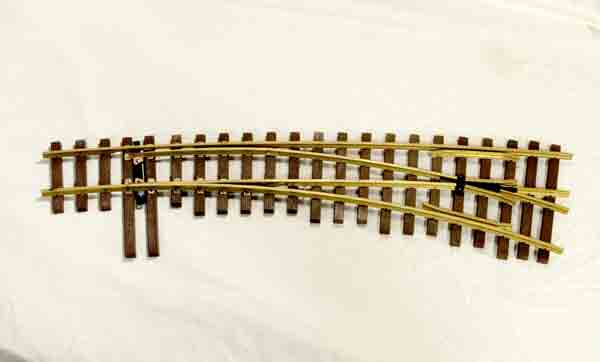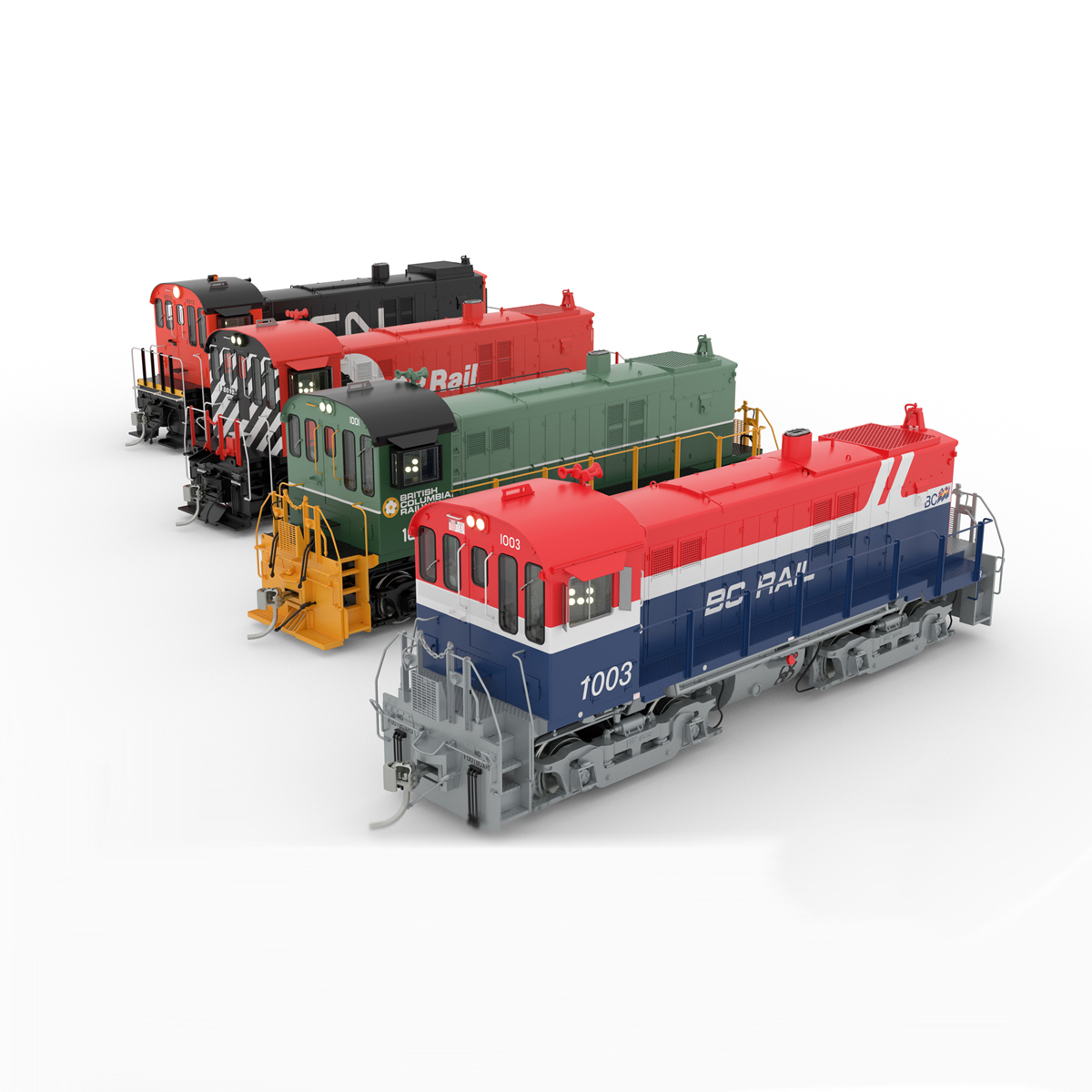Sunset Valley Railroad
21616 23rd St. Ct. E.
Lake Tapps WA 98391
Prices: Brass rails, $118; stainless rails, $129
Website: www.svrronline.com
Gauge-1, curved switch with either brass or stainless-steel rails; plastic ties; outer radius, 90″; inner radius, 38″; #4 frog; standard ties are 1:20.3 scale but 1:32 ties can be special ordered; left- and right-hand available
Pros: Sturdy construction; all critical measurements meet G1MRA/NMRA standards; 1:20.3
ties appropriately sized to represent narrow-gauge track
Cons: 38″ radius on diverging track (inner radius) may be too tight for some 1:20.3 locomotives and rolling stock; tip of inner switch point not tight against stock rail—may cause wheel flanges to pick and derail
Sunset Valley has answered that call with a new curved switch in their line of narrow-gauge switches. (They will build one using their 1:32 standard-gauge ties by request.) The outer radius is 90″ (roughly 15′ diameter), while the diverging track (inner radius) is 38″ (a little over 6′ diameter). The insulated frog is a #4. The switch is available with either brass or stainless steel, code-250 rails and as either left hand or right hand.
On first inspection, the switch appeared to be everything I’d expect from Sunset Valley: sturdy construction, with metal spikes holding the rails to the plastic UV-protected ties (the spikes are bent over on the bottom so they will not pull out). Critical measurements at the frog and points meet G1MRA and NMRA standards for track clearances. Brass jumpers soldered across gaps in the rails maintain electrical continuity, and the points are nicely machined. I did notice that, on the inner point, the tip of the point didn’t close as flush against the stock rail as I’ve seen on other Sunset Valley switches. The danger here is that it’s out far enough to possibly catch the flange of a pilot wheel and cause a derailment. This can usually be mitigated by filing an angle on the tip of the point so it’s a little more tapered. In this case, though, it’s more of a geometry issue with the way the point fits against the curved stock rail; I think maybe a bit more meat should be milled out of the point to better match the curve of the stock rail. You might be able to introduce a very gentle bend at the point as an alternative. I’d just let it ride unless it started giving trouble, though.
The switch is advertised as being “narrow gauge,” meaning the ties are cut to represent typical narrow-gauge size and spacing in 1:20.3 scale. The literature calls the switch 1:20.3 scale, though I would caution that the 38″ radius of the diverging track is less than what is typically stated as the minimum radius for most manufacturers’ 1:20.3 equipment. If you’re running shorter 1:20.3 stuff or 1:22/1:24 equipment (LGB, etc.), then you’ll be fine.
Overall, a curved switch is a nice addition to the company’s line. It fills a void and allows the modeler a little extra freedom when laying things out. I hope to someday see a #6 curved switch so that those of us who run the larger 1:20.3 equipment can enjoy a little more confidence knowing that our equipment will make it over the switches without trouble.














